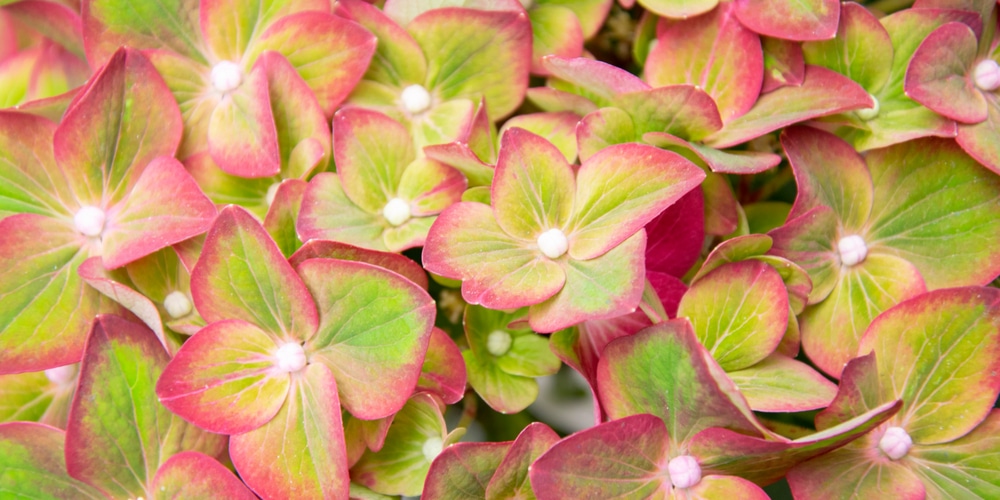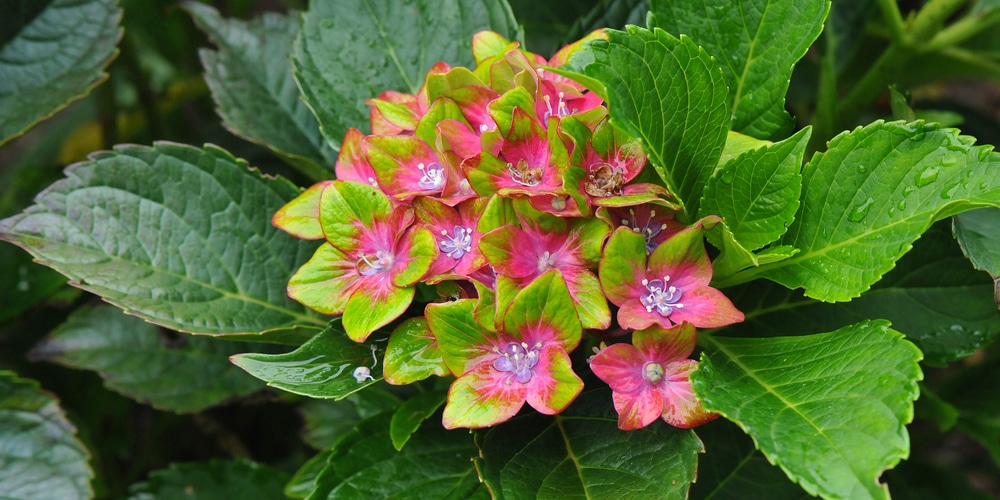A beautiful garden is a source of enjoyment for all who see it. The colors and smells of the flowers, the freshness of the air, and the sound of the leaves rustling in the breeze can create an oasis of peace. Among the many different types of flowers that you can find in gardens, hydrangeas are some of the most popular.
And of all the hydrangeas, the Pistachio Hydrangea is one of the most lovely. With its large clusters of pistachio green flowers, it is sure to add a touch of elegance to any garden.

| Botanical Name | Hydrangea Macrophylla’ Pistachio’ |
| Common Name | Pistachio Hydrangea |
| Plant Type | Perennial |
| Flower Color | Green |
| Size When Mature | 36 inches |
| Bloom Time | Early Summer to Fall |
| Sun Requirements | Partial to Full Sun |
| USDA Hardiness Zones | 5-9 |
| Soil PH Range | 5.0-8.0 |
| Soil Type | Acidic, Neutral, Alkaline, Well-draining |
| Water Needs | Low-Medium |
| Native Area | Japan |
What You Need to Know About Pistachio Hydrangea
The Pistachio Hydrangea is native to Japan. It can grow quite large, reaching up to 36 inches in height. The plant is a deciduous shrub, meaning it loses its leaves in the fall. The plant is part of the hydrangea family, known for its large, showy flowers.
The leaves of the plant are like little green gems, each one shining brightly in the sunlight. They are clustered together in a tight bunch, with each leaf attached to the stem at its base. The leaves are broad and oval-shaped, tapering to a point at the tips. The edges of the leaves are serrated, giving them a jagged appearance.
The flowers from this plant are its most defining feature. The large, round clusters of flowers are a beautiful shade of Pistachio green, hence the name. They are incredibly eye-catching and will make a statement in any garden. The blooms appear in early summer and will continue to bloom till fall.
Caring for this plant is relatively easy, making it an excellent choice for beginner gardeners. Be careful having this plant around your pets, as the flowers and leaves are poisonous if ingested.
How to Care for Pistachio Hydrangea
Here’s everything you need to know about growing and caring for a thriving Pistachio Hydrangea:
Light
The plant is a beautiful one that can thrive in either full sun or partial shade. If you live in an area with hot summers, it’s best to give this plant some afternoon shade to protect its leaves from scorching.
Putting the plant in partial shade is best to show its beautiful colors. The flowers will be a lighter green if the plant gets too much sun.
Water and Soil Needs
These beautiful blossoms require little maintenance beyond the occasional watering. Give them a good drink once a week to saturate the soil around the roots. If the weather is particularly hot or dry, you may need to water more frequently. Let the top inch of soil dry out before watering again.
The plant thrives in moist, well-drained soil with a pH range of 5.0-8.0. It is important to regularly test your soil to ensure that it is within the ideal range for the Pistachio Hydrangea.
You can add organic matter to the soil to help improve drainage and increase fertility. Additionally, make sure to mulch around the base of the plant to help retain moisture and keep roots cool during the hot summer months.
Temperature Requirements
As any gardener knows, the temperature is one of the most important factors in plant care. The plant requires a very specific range of temperatures to thrive. The ideal temperature for these plants is between -20°F and 30°F. The plant will wilt and drop leaves if the temperature gets too hot or too cold.
Also, the plant is hardy in USDA zones 5-9, so make sure you know your zone before planting.
Fertilizer
The best fertilizer to use on a Pistachio Hydrangea is a granular fertilizer with high Phosphorus. Having a fertilizer with high Phosphorus content makes sure that the plant produces beautiful leaves all year round.
Apply the fertilizer in early spring, before the plant begins to bloom. Be sure to follow the package instructions carefully, as too much fertilizer can damage the plant’s roots. After applying the fertilizer, water it well to help distribute the nutrients evenly throughout the soil.
Common Diseases
One of the most important aspects of caring for a pistachio hydrangea is preventing disease. These plants are susceptible to a number of common diseases, including powdery mildew, leaf spot, and root rot.
To prevent these diseases from taking hold, plant your hydrangea in well-drained soil and water it regularly. You should also avoid overhead watering, as this can encourage fungal growth. If you notice any disease signs, prune away affected leaves and stems immediately.
Pistachio Hydrangea Propagation
Pistachio hydrangeas are one of the most beautiful and unique flowers you can find. And they’re not just pretty to look at – they’re also relatively easy to propagate.
First, take a cutting from a healthy pistachio hydrangea plant. Ensure the cutting is about 6 inches long and at least two sets of leaves.
Next, fill a pot with moist potting mix and insert the cutting. Water well and place the pot in a bright, indirect light area.
Keep the soil moist but not soggy, and you should see new growth in a few weeks. Once the cutting has rooted and begun to grow, you can transplant it into your garden.
Related Article: Do Hydrangeas Die in Winter

